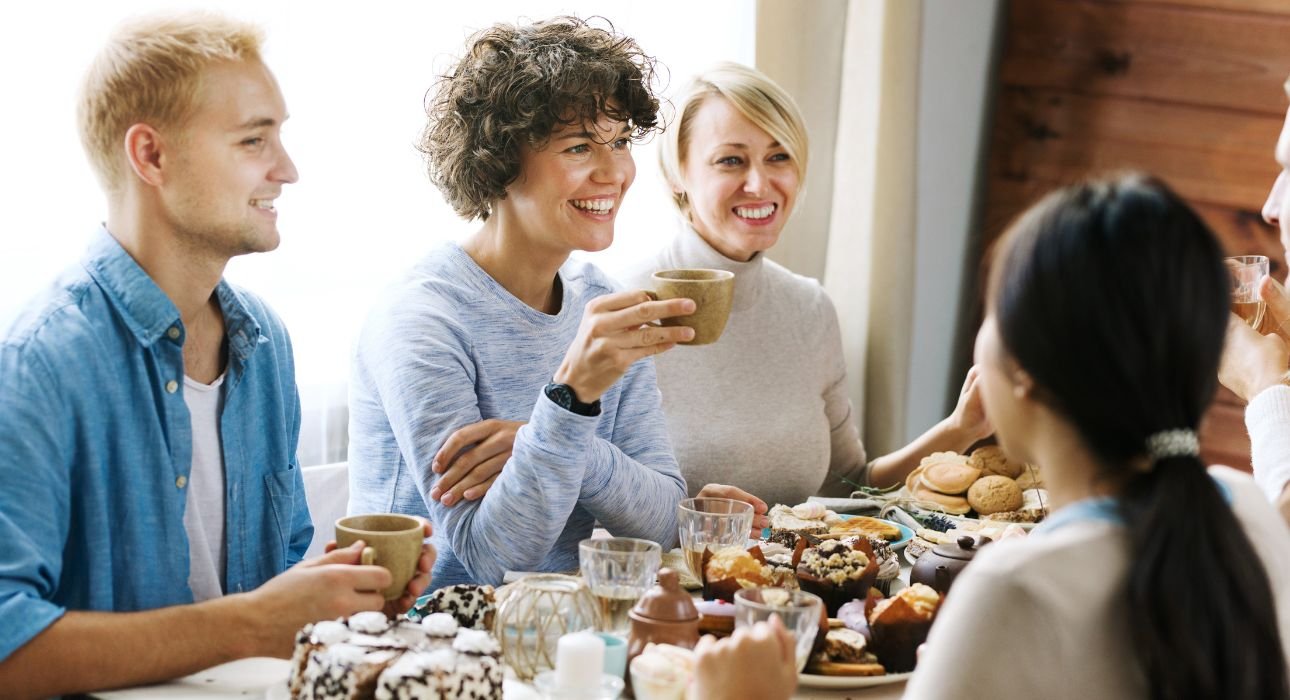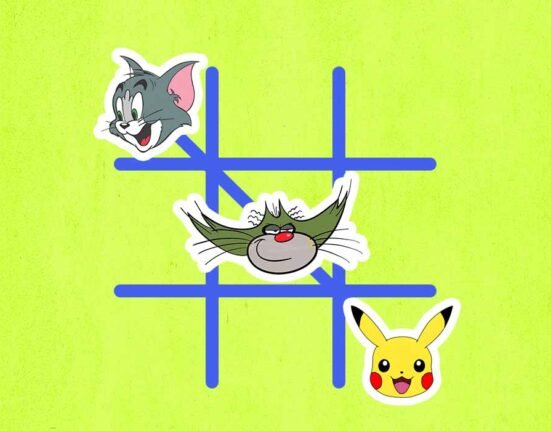It was a winter evening in Delhi. Archie, new to the city and her workplace, found herself invited to “ Chai with the team”. At first hesitant, she followed along. Sitting on the coffee terrace, sipping cutting chai in paper cups, she listened to colleagues talk about everything from client deadlines to cricket. She didn’t speak much, but in that 20-minute ritual, she felt a shift. The tea wasn’t the point. It was a shared moment, the feeling of being seen and included.
This kind of scenario is not uncommon. Across cultures and ages, Substance use in Social settings, whether tea, alcohol, hookah or even paan, often becomes a ritual that fosters human connection. But why does it work so well psychologically? This article explores the psychological underpinnings of shared substance use as a social ritual and why it continues to act as a conduit for human connection across cultures and generations.
Read More: Why Solitude Recharges but Social Anxiety Suffocates
Understanding Social Rituals
Social rituals are structured, symbolic acts that go beyond their surface behaviour. They reinforce group identity, belonging and emotional security (Rock, 1985). Rituals provide a shared framework where individuals feel grounded, seen and part of something larger than themselves. Shared substance use is often woven into these rituals. From past work beers to date night coffees or casual hookah sessions, these moments are lensed about the substance and more about the sense of togetherness they represent. This is a symbolic gesture of inclusion to offer someone a cigarette, pour a drink or prepare a cup of tea. They help navigate the unspoken rules of interaction. In group settings, especially new ones, rituals act as entry points. Think of workplace initiate drinks, a student’s first cup of hostel chai or even communal cannabis use in some social circle. These mark transitions and grant social legitimacy.
Read More: Cultural Rituals of Fasting and Their Psychological Impact
Why shared Substance Use Fosters Belonging
Interpersonal coordination and reflective behaviours engaging in the same activity are like sipping the same drink, fostering social monitoring, subtly enhancing empathy and strengthening interpersonal bonds. (Chartrand & Bargh, 1999). These well-matched behaviours create a sense of rhythm and mutual comfort, especially in new or uncertain settings.
1. Neurochemical Bonding
Substances like alcohol have a physiological effect that reduces inhibition and stimulates oxytocin, the bonding hormone, enhancing trust and openness (MacDonald & MacDonald, 2010)
- Dopamine Release: shared pleasurable activities boost reward chemicals.
- Mirror Neurons: Observing someone else engage in the same act ( e.g., sipping from the same cup) creates empathy and emotional alignment.
Dunbar (2010) discussed how shared experiences, including consumption, may increase Oxytocin and Social cohesion.
2. Safe Vulnerability
Sharing substances often softens defences. Vulnerability, expressing fears, mistakes, or humour, is key to intimacy. As Brown (2012) notes, “Connection is the energy that exists between people when they feel seen, heard and valued”.
3. Rituals as Emotional Anchor
Regular chai breaks or weekend drinks act as anchors in people’s routines. These symbolic pauses provide a sense of continuity and safety, crucial in workplaces, friendships and families (Rock, 1985).
Read More: The Power of Vulnerability
Cultural Contexts: Substance Use as Social Language
Substance sharing rituals vary across cultures but serve similar psychological functions:
- Tea in East Asia: Tea ceremonies are not just about a beverage; offering a chai or paan is a ceremonial practice signifying respect and connection.
- Japan: Nomikai (Work drinking parties) are vital for breaking hierarchy and fostering trust.
- Western Contexts: Wine nights, barbecues or coffee meet-ups often become the backdrop for deep connection. It is tied to heritage, celebration and social bonding.
- Hookah in the Middle East: Often a shared, leisurely activity symbolising hospitality.
In each context, the substance is a medium, a social language that invites intimacy. These practices are not only habitual but also reinforce identity through cultural continuity, linking generations. Even modern examples, like coffee shop meetups or happy hour in an urban setting , reflect cultural patterns of bonding through consumption. These rituals operate as familiar scripts, reducing social anxiety and encouraging interaction.
Read More: Addiction Psychology and Relapse Prevention: Trauma-Informed Approaches to Substance Use Disorders
Risks and Social Pressure to Belong
Despite their connective power, these rituals carry risks. People, especially adolescents or newcomers, may feel pressured to partake in substances to avoid exclusion (Borsari & Carey, 2001). Reinforced over time, these behaviours may blur into dependence. Research shows that peer environments heavily influence the development of unhealthy substance patterns (Grant et al., 2015). What begins as a tool for connection can become a mask for emotional distress.
A student who declines alcohol at a party or a colleague who doesn’t smoke may face subtle exclusion. The pressure to confirm is strong, especially in adolescence and early adulthood, where identity is still forming ( Erikson, 1968). People may participate in substance use not out of desire, but from fear of being left out or misunderstood ( Newcomb & Bentler,1988). This complicates the line between voluntary bonding and coerced conformity.
The Power Of Alternatives
The good news? It’s not the substance that holds power, but it’s the shared ritual. Alternatives that foster connection without reliance include:
- Mocktail or tea gatherings
- Shared creative experiences (like painting or jimmying)
- Game nights, storytelling circles or collaborative cooking.
Creating safe, inclusive rituals allows people to bond without compromising autonomy or health.
Digital Rituals: Belonging in the Virtual Space
In a digital era, rituals of shared consumption extend online. Virtual coffee dates, tea selfies or posting “weekend wine” stories on Instagram create a collective rhythm of belonging. Digital platforms replicate the feeling of togetherness, especially when physical proximity isn’t possible. These ritualised online behaviours, like tagging a friend in a coffee meme or sharing smoking cessation milestones, show how the psychological need for shared identity is met with technology. (Baym, 2015)
Real Life Example: The Power of Rituals
Om, a first-year MBA student, recalls being invited to a weekend hookah night. Though he didn’t smoke, he went for the music and conversation. Over time, he started participating “ just to fit in” Only later, during a group reflection activity, did he realise he could still belong without using the hookah. “It was the jokes, the shared playlists, that were the real bond, “ he said. The story highlights the difference between inclusion through substance and connection through presence.
Read More: Relationships and substance abuse
Psychological Insights: Belonging and group identity
How human psychology is wired for connection and why we often seek out group belonging. It dives into how shared rituals like consuming substances together ( e.g., drinking tea, alcohol, smoking, etc. ) can signal trust, loyalty and emotional bonding. From a psychological perspective, such acts fulfil deep social needs, offering a sense of identity and shared purpose.
According to Baumeister and Leary (1995), the need to belong is a fundamental human drive that social rituals, especially those involving shared consumption, create:
- Belonging Cues: Humans have a fundamental drive to form and maintain strong social bonds. Rituals offer a structured way to satisfy this. ( Baumeister& Leary, 1995)
- Symbolic Intimacy: Shared behaviours carry meaning; using the same substance in a group becomes more than consumption, it becomes symbolic of connection and acceptance.
- Micro-moments of joy: We laugh, we share, we pause; people define themselves through group affiliations. Participating in group norms, including substance use, reinforces this identity.
Read More: Coping Withdrawal Symptoms of Substance abuse
Conclusion
In a world craving connection, rituals offer emotional anchor points. Shared substance use, like a drink at dinner or a coffee break, often acts as an entry point into a deeper relationship. However, we must be mindful that inclusion shouldn’t come with unspoken substance expectations. But it’s essential to remember that the true bonding agent isn’t tea, coffee, cigarettes or other substances; rather, it’s the shared experience and emotional safety created through those acts. As society evolves, so must our rituals, ensuring they remain inclusive, flexible and substance optional. In understanding the psychology of these rituals, we open pathways to more conscious, healthy and equitable forms of connection, where no one is left behind simply because they don’t sip from the same cup.
References +
Baumeister, R. F., & Leary, M. R. (1995). The need to belong: Desire for interpersonal attachments as a fundamental human motivation. Psychological Bulletin, 117(3), 497–529.
Borsari, B., & Carey, K. B. (2001). Peer influences on college drinking: A review of the research. Journal of Substance Abuse, 13(4), 391–424.
Brown, B. (2012). Daring greatly: How the courage to be vulnerable transforms the way we live, love, parent, and lead. Gotham Books.
Chartrand, T. L., & Bargh, J. A. (1999). The chameleon effect: The perception–behaviour link and social interaction. Journal of Personality and Social Psychology, 76(6), 893–910.
Grant, B. F., et al. (2015). Epidemiology of DSM-5 alcohol use disorder. JAMA Psychiatry, 72(8), 757–766.
MacDonald, K., & MacDonald, T. M. (2010). The peptide that binds: A systematic review of oxytocin and its prosocial effects in humans. Harvard Review of Psychiatry, 18(1), 1–21.
Rook, D. W. (1985). The ritual dimension of consumer behaviour. Journal of Consumer Research, 12(3), 251–264.
Baym, N. K. (2015). Personal connections in the digital age. Polity Press.
Dunbar, R. I. M. (2010). The social role of touch in humans and primates: Behavioural function and neurobiological mechanisms. Neuroscience & Biobehavioral Reviews, 34(2), 260–268.
Erikson, E. H. (1968). Identity: Youth and crisis. Norton.
Insel, T. R., & Young, L. J. (2001). The neurobiology of attachment. Nature Reviews Neuroscience, 2(2), 129–136.
Newcomb, M. D., & Bentler, P. M. (1988). Impact of adolescent drug use and social support on problems of young adults: A longitudinal study. Journal of Abnormal Psychology, 97(1), 64–75.
Rizzolatti, G., & Craighero, L. (2004). The mirror-neuron system. Annual Review of Neuroscience, 27, 169–192.
Tajfel, H. (1982). Social psychology of intergroup relations. Annual Review of Psychology, 33(1), 1–39.













Leave feedback about this